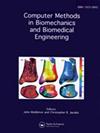利用混合机器学习提高心脏病预测的准确性。
IF 1.7
4区 医学
Q3 COMPUTER SCIENCE, INTERDISCIPLINARY APPLICATIONS
Computer Methods in Biomechanics and Biomedical Engineering
Pub Date : 2025-06-02
DOI:10.1080/10255842.2025.2510368
引用次数: 0
摘要
在这项研究中,使用自适应增强(ADA)和直方图梯度增强(HGB)机器学习模型进行心血管疾病预测。为了提高模型的预测精度,将元启发式优化算法海马优化器(SHO)和混沌博弈优化器(CGO)集成到模型中。这导致了混合模型的发展:ADSH (ADA + SHO)、ADCG (ADA + CGO)、HGSH (HGB + SHO)和HGCG (HGB + CGO)。其中,HGSH模型的准确率最高,达到0.912,优于其他模型。HGCG次之,精度为0.902,基础ADA模型性能较差,精度为0.840。本文章由计算机程序翻译,如有差异,请以英文原文为准。
Enhancing heart disease prediction accuracy with hybrid machine learning.
In this study, cardiovascular disease prediction was performed using adaptive boosting (ADA) and histogram gradient boosting (HGB) machine learning models. To improve their predictive accuracy, metaheuristic optimization algorithms, the Sea-Horse Optimizer (SHO) and the Chaos Game Optimizer (CGO), were integrated with the models. This led to the development of hybrid models: ADSH (ADA + SHO), ADCG (ADA + CGO), HGSH (HGB + SHO), and HGCG (HGB + CGO). Among them, the HGSH model achieved the highest accuracy of 0.912, outperforming the others. HGCG followed with 0.902, while the base ADA model showed lower performance with a precision of 0.840.
求助全文
通过发布文献求助,成功后即可免费获取论文全文。
去求助
来源期刊
CiteScore
4.10
自引率
6.20%
发文量
179
审稿时长
4-8 weeks
期刊介绍:
The primary aims of Computer Methods in Biomechanics and Biomedical Engineering are to provide a means of communicating the advances being made in the areas of biomechanics and biomedical engineering and to stimulate interest in the continually emerging computer based technologies which are being applied in these multidisciplinary subjects. Computer Methods in Biomechanics and Biomedical Engineering will also provide a focus for the importance of integrating the disciplines of engineering with medical technology and clinical expertise. Such integration will have a major impact on health care in the future.

 求助内容:
求助内容: 应助结果提醒方式:
应助结果提醒方式:


